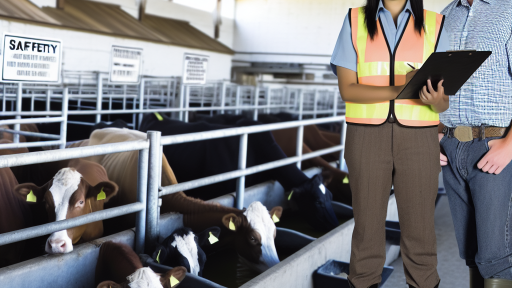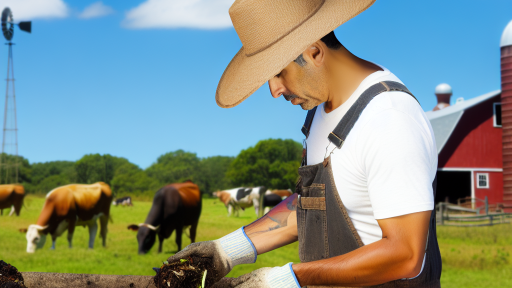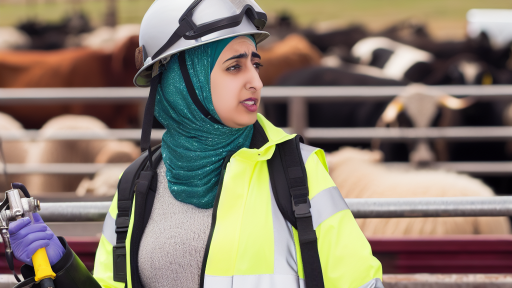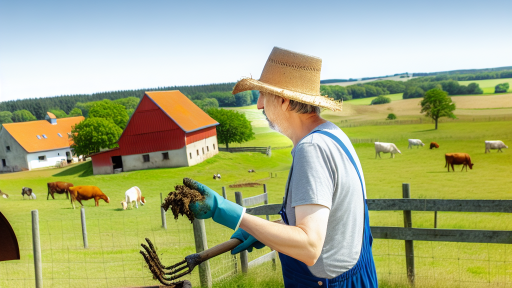Introduction to Temperature Control in Livestock Facilities
Temperature control plays a crucial role in livestock farming.
It affects animal health, productivity, and overall growth.
Inadequate temperature management can lead to stress and illness.
Consequently, effective temperature regulation improves farm efficiency.
Importance of Temperature Control
Temperature significantly impacts livestock well-being.
Livestock suffering from heat stress have reduced growth rates.
Moreover, cold stress can lower immunity and increase mortality rates.
Hence, maintaining optimal conditions is essential for livestock facilities.
Factors Influencing Temperature Control
Several factors influence temperature inside livestock facilities.
- Building design plays a key role in temperature regulation.
- Insulation materials can trap heat or keep it out effectively.
- Ventilation systems help maintain air circulation and comfort.
- Geographic location affects external temperature variations.
Strategies for Effective Temperature Management
Farmers can implement various strategies for temperature management.
- Use of heating and cooling systems is paramount.
- Regular maintenance of equipment ensures optimal performance.
- Monitoring systems allow for real-time temperature tracking.
- Creating shade and water access helps animals cope with heat.
Technological Advances in Temperature Control
Modern technology offers innovative solutions for temperature regulation.
Automated systems can adjust conditions based on real-time data.
Smart sensors provide accurate readings of temperature and humidity.
Furthermore, IoT devices enable remote monitoring and control.
Importance of Temperature Regulation for Animal Health and Productivity
Maintaining Optimal Temperature for Livestock
Temperature regulation is vital for livestock health.
Transform Your Agribusiness
Unlock your farm's potential with expert advice tailored to your needs. Get actionable steps that drive real results.
Get StartedAnimals thrive within specific temperature ranges.
Extreme temperatures can lead to stress and illness.
Therefore, managing temperature enhances overall livestock welfare.
Impact on Animal Behavior
Temperature influences animal activity levels.
Comfortable temperatures promote normal behavior.
Uncomfortable conditions can cause aggression and anxiety.
This behavior impacts social structures within herds.
Influence on Growth and Productivity
Optimal temperature is essential for growth rates.
Higher temperatures can reduce feed intake in livestock.
Consequently, production efficiency declines during heat stress.
Moreover, maintaining ideal conditions ensures better weight gain.
Effects on Reproductive Performance
Temperature regulation affects reproduction in animals.
Heat stress can lead to decreased fertility rates.
This can result in fewer viable offspring and longer calving intervals.
Ultimately, it affects overall herd productivity.
Strategies for Effective Temperature Control
Implementing cooling systems can mitigate heat stress.
Shade and ventilation can improve thermal comfort outdoors.
Insulation in barns helps maintain stable indoor temperatures.
Monitoring systems allow for real-time temperature adjustments.
- Fans and misters can cool down the barn environment.
- Regularly check for proper airflow in facilities.
- Use thermal imaging to identify hot spots in barns.
Investing in these strategies leads to healthier livestock.
Factors Influencing Temperature Needs of Different Livestock Species
Species-Specific Temperature Preferences
Different livestock species have unique temperature requirements.
Cattle thrive in temperatures between 40°F and 70°F.
Poultry prefers slightly warmer conditions, typically between 70°F and 80°F.
Understanding these nuances is crucial for effective temperature management.
Showcase Your Farming Business
Publish your professional farming services profile on our blog for a one-time fee of $200 and reach a dedicated audience of farmers and agribusiness owners.
Publish Your ProfileAge and Developmental Stage
The age of livestock significantly affects their temperature needs.
Newborns require warmer environments to maintain body heat.
Young animals often need higher temperatures than adults.
Farmers should adjust heating systems as animals grow.
Health and Physical Condition
Healthy animals withstand temperature changes better than those unwell.
Illness can increase an animal’s metabolic needs and alter temperature tolerance.
Thus, monitoring health status is essential for temperature regulation.
External Environmental Factors
Weather conditions can drastically influence temperature control in facilities.
High humidity levels can make it feel warmer than the actual temperature.
Conversely, cold wind can lower the effective temperature experienced by livestock.
Farmers must adapt their management strategies to these external factors.
Housing and Facility Design
The design of livestock housing impacts temperature regulation and comfort.
Well-ventilated buildings help maintain stable temperatures.
Insulation can also play a key role in energy efficiency and comfort.
Farmers should invest in appropriate structures to support livestock welfare.
Feeding and Nutritional Factors
Nutrition affects an animal’s ability to handle temperature changes.
Nutrient-rich diets can enhance metabolic processes, generating heat.
Providing adequate energy is essential for maintaining body temperature.
Thus, diet management is crucial for climate control in livestock facilities.
Human Management Practices
Finally, the practices of farm staff impact temperature management.
Regular monitoring of temperatures ensures timely adjustments can be made.
Training staff on the specific needs of various livestock species is vital.
Utilizing technology can streamline temperature control efforts.
Explore Further: Traits to Select for in Cattle Breeding
Common Temperature Control Systems Used in Livestock Facilities
Ventilation Systems
Ventilation systems play a critical role in maintaining temperature control.
These systems allow fresh air to enter, which reduces heat buildup.
For instance, natural ventilation relies on wind and temperature differences.
Conversely, mechanical systems utilize fans to circulate air effectively.
Both methods aim to enhance animal comfort and productivity.
Heating Systems
Heating systems are essential for maintaining warmth during colder months.
Popular heating options include forced-air heaters and radiant heaters.
Forced-air heaters quickly warm up spaces but may consume more energy.
On the other hand, radiant heaters provide consistent warmth at lower energy costs.
Choosing the right system depends on facility size and livestock type.
Cooling Systems
Evaporative cooling pads are widely used in livestock facilities.
These pads cool incoming air as it passes through moisture.
Additionally, fans can enhance airflow and cooling efficiency.
Properly designing cooling systems ensures livestock thrive all year.
Insulation Techniques
Insulation plays a significant role in temperature control.
Showcase Your Farming Business
Publish your professional farming services profile on our blog for a one-time fee of $200 and reach a dedicated audience of farmers and agribusiness owners.
Publish Your ProfileUsing high-quality materials can reduce heat loss in winter.
It also keeps buildings cooler during summer months.
Concrete walls, insulated roofs, and double-pane windows are effective options.
Investing in good insulation pays off in energy costs over time.
Smart Technology
Smart technology enhances temperature management efficiency.
Automated thermostats allow for precise temperature monitoring.
These systems can adjust heating and cooling as needed.
Sensors can alert managers to temperature fluctuations, too.
Integration of smart technology improves overall facility management.
Gain More Insights: Enhancing Goat Milk Production Naturally
Ventilation Techniques for Maintaining Optimal Temperature
Importance of Proper Ventilation
Proper ventilation plays a critical role in livestock facilities.
It maintains a healthy environment for the animals.
Moreover, it prevents heat stress during warm months.
Animals perform better in controlled temperature settings.
Natural Ventilation Methods
Natural ventilation relies on the natural airflow within a building.
Therefore, strategic design is crucial for its effectiveness.
Opening windows and doors allows fresh air to circulate.
Positioning vents at high and low points encourages airflow.
- High vents release warm air.
- Low vents draw in cooler air.
In addition, roof designs can enhance natural ventilation.
For instance, slope and ridge vents facilitate airflow.
Mechanical Ventilation Systems
Mechanical ventilation provides consistent airflow, regardless of outdoor conditions.
Fans and exhaust systems actively move air throughout the facility.
These systems are particularly useful for large barns.
- Exhaust fans remove stale air.
- Intake fans bring in fresh air.
Adjustable fan speeds can optimize temperature control.
Controlled Environment Systems
Controlled environment systems allow precise temperature regulation.
These systems incorporate thermostats and automated controls.
They can adjust airflow based on real-time temperature readings.
- Heating elements may supplement ventilation in cold weather.
- Cooling systems help reduce heat stress in summer.
Such systems ensure optimal conditions for livestock health.
Implementing Effective Practices
Regular maintenance ensures ventilation systems function properly.
Check fan blades and filters for dust and debris.
Cleansing ducts can enhance overall airflow efficiency.
Training staff on ventilation management is also beneficial.
They should understand how to monitor and adjust systems.
Monitoring Temperature and Humidity
Utilizing temperature and humidity sensors aids in monitoring conditions.
This technology can alert farmers to deviations from optimal ranges.
Regular monitoring helps prevent temperature spikes or drops.
Farmers can then take corrective actions swiftly.
Explore Further: Preventing Common Goat Diseases Naturally
Insulation Materials and Their Role in Temperature Regulation
Importance of Temperature Control
Temperature control in livestock facilities significantly impacts animal health and productivity.
It ensures optimal growth rates and improves overall well-being.
Showcase Your Farming Business
Publish your professional farming services profile on our blog for a one-time fee of $200 and reach a dedicated audience of farmers and agribusiness owners.
Publish Your ProfileMaintaining the right temperature also reduces stress and disease risks among animals.
Types of Insulation Materials
Several insulation materials effectively regulate temperature in livestock facilities.
These materials include fiberglass, foam board, and cellulose insulation.
Each type has unique properties and benefits for temperature management.
Fiberglass Insulation
Fiberglass insulation is known for its thermal resistance and moisture resistance.
It effectively reduces heat transfer, keeping indoor temperatures stable.
This material is lightweight and easy to install in barns and other structures.
Foam Board Insulation
Foam board insulation provides excellent thermal performance and durability.
Its rigid structure contributes to energy efficiency in livestock buildings.
Moreover, it is resistant to moisture and pests, enhancing longevity.
Cellulose Insulation
Cellulose insulation is an eco-friendly option made from recycled materials.
It offers good thermal performance and soundproofing qualities.
Additionally, it can help regulate humidity levels, promoting a comfortable environment.
Factors Influencing Insulation Choice
When selecting insulation materials, several factors come into play.
First, the local climate greatly affects thermal requirements.
Second, the type of livestock housed impacts the necessary temperature regulation.
Also, energy efficiency goals should guide material choices to reduce operational costs.
Installation Best Practices
Proper installation of insulation materials is crucial for their effectiveness.
Ensure all gaps and seams are sealed tightly to prevent air leakage.
Additionally, pay attention to ventilation to avoid moisture build-up.
Regular inspections should follow installation to maintain performance over time.
Benefits of Effective Insulation
Using high-quality insulation materials yields numerous benefits for livestock operations.
These include reduced heating and cooling costs throughout the year.
Furthermore, insulation enhances animal comfort, leading to better productivity.
Increased energy efficiency also contributes to environmental sustainability.
Learn More: Nutritional Needs of Various Exotic Livestock
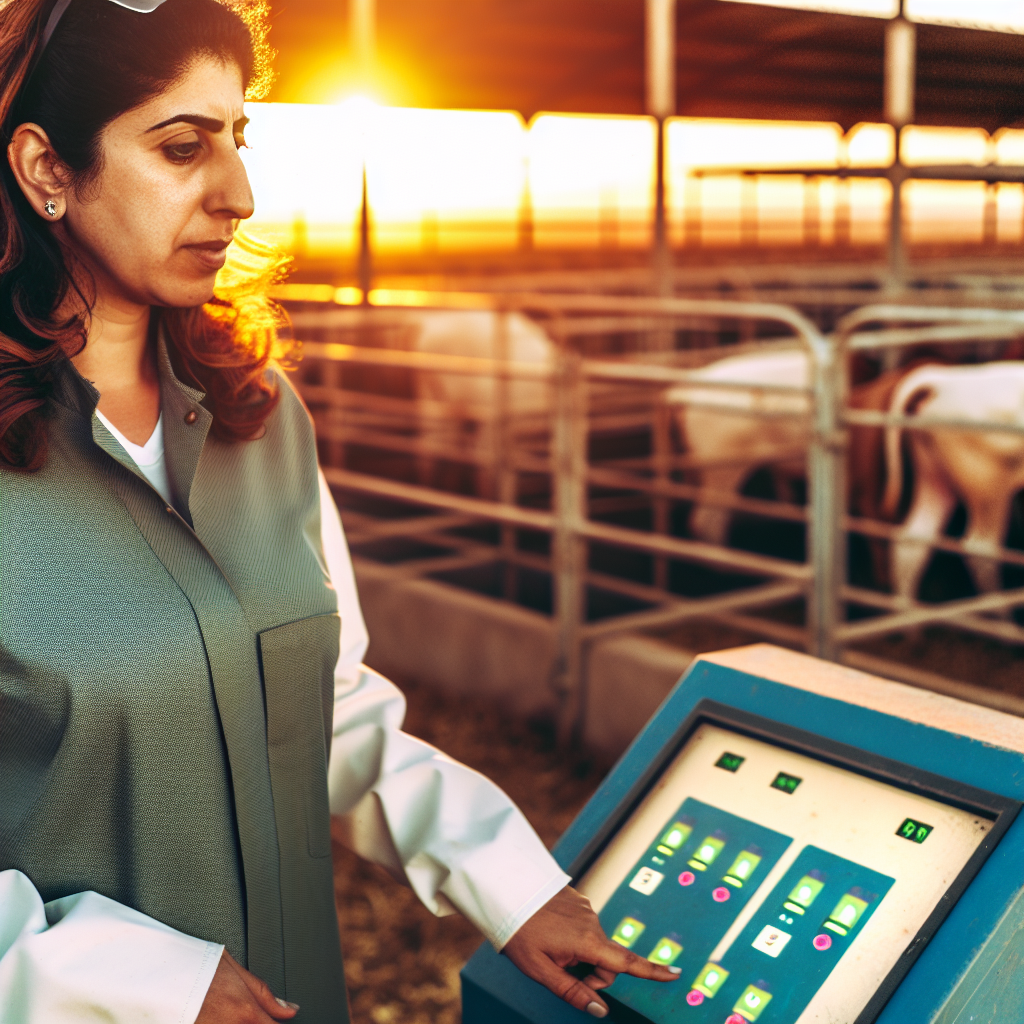
Impact of Extreme Temperatures on Livestock Welfare
Overview of Temperature Effects
Extreme temperatures significantly affect livestock welfare.
Heat stress can decrease animal productivity and health.
Cold stress, on the other hand, can lead to hypothermia and reduced growth rates.
Physiological Responses to Temperature
Livestock exhibit various physiological responses to extreme temperatures.
In high heat, animals increase their respiration rate to cool down.
This response can lead to dehydration and fatigue.
Conversely, cold weather prompts animals to seek warmth.
They may huddle together or reduce activity levels to conserve heat.
Behavioral Changes
Extreme temperatures also trigger notable behavioral changes in livestock.
During hot weather, animals may seek shade and water.
This change can affect feeding and social interactions.
In colder climates, livestock often display increased aggression.
This behavior stems from stress and competition for warmth.
Long-Term Health Impacts
Repeated exposure to extreme temperatures harms livestock health over time.
Showcase Your Farming Business
Publish your professional farming services profile on our blog for a one-time fee of $200 and reach a dedicated audience of farmers and agribusiness owners.
Publish Your ProfileChronic heat stress can result in lower fertility rates and decreased milk production.
Additionally, cold stress may lead to higher susceptibility to diseases.
Therefore, managing temperature is crucial for optimal livestock health.
Strategies for Temperature Management
Implementing effective temperature control strategies enhances animal welfare.
One method involves improving housing design to allow better airflow.
Additionally, using insulation can help maintain comfortable temperatures in barns.
Water access plays a vital role in heat management.
Keeping animals hydrated reduces the risk of heat stress significantly.
Ensuring Optimal Livestock Welfare
Ensuring optimal temperatures for livestock is essential for their welfare.
Both extreme heat and cold can have detrimental effects on health.
Effective management strategies lead to healthier livestock and better productivity.
Monitoring Temperature: Tools and Technologies for Effective Management
Importance of Temperature Control
Proper temperature control is essential in livestock facilities.
It ensures animal welfare and productivity.
Moreover, it reduces the risk of heat stress and illness.
Types of Temperature Monitoring Tools
Various tools exist for monitoring temperature effectively.
Digital thermometers offer quick and accurate readings.
Infrared thermometers allow for non-contact temperature assessments.
Data loggers continuously record temperature changes over time.
Smart Technologies in Temperature Management
Smart technologies enhance temperature monitoring capabilities.
Internet-connected sensors provide real-time data access.
Mobile apps can alert managers about temperature fluctuations.
Automated climate control systems adjust temperatures automatically.
Implementing Monitoring Systems
Establishing a temperature monitoring system requires planning.
Assess your facility’s layout for optimal sensor placement.
Ensure that all devices are calibrated regularly.
Train staff on using monitoring tools effectively.
Benefits of Regular Temperature Monitoring
Regular monitoring improves overall animal health.
It helps reduce veterinary costs through early detection.
Furthermore, it can increase productivity and growth rates.
Finally, it enhances the quality of livestock products.
Effective Temperature Control Strategies
Implementing effective temperature control strategies is vital.
Evaluate the current systems in place and upgrade as necessary.
Consider investing in smart monitoring technologies for better management.
Best Practices for Implementing Temperature Control Solutions
Assessing Facility Needs
Evaluate the specific requirements of your livestock facility.
Consider the type of animals, age, and health status.
Additionally, assess the geographical climate conditions.
Selecting Efficient Equipment
Choose high-quality temperature control systems.
Invest in energy-efficient heating and cooling units.
Furthermore, ensure proper insulation to minimize energy loss.
Implementing Monitoring Systems
Install temperature monitoring devices throughout the facility.
Showcase Your Farming Business
Publish your professional farming services profile on our blog for a one-time fee of $200 and reach a dedicated audience of farmers and agribusiness owners.
Publish Your ProfileUse automated systems for real-time temperature tracking.
Moreover, consider alerts for extreme temperature changes.
Training Staff Responsibly
Provide comprehensive training for your staff.
Ensure they understand how to operate equipment properly.
Additionally, educate them on recognizing temperature-related stress in livestock.
Regular Maintenance Protocols
Establish a routine maintenance schedule for equipment.
Check for wear and tear on all temperature control systems.
Furthermore, ensure that air filters are clean and functioning effectively.
Evaluating and Adjusting Strategies
Regularly review the temperature control performance.
Seek feedback from staff and observe animal behavior.
Based on insights, make necessary adjustments to strategies.
Additional Resources
Investigation of Avian Influenza A (H5N1) Virus in Dairy Cattle | FDA
Climate Change Policy and the Adoption of Methane Digesters on …

